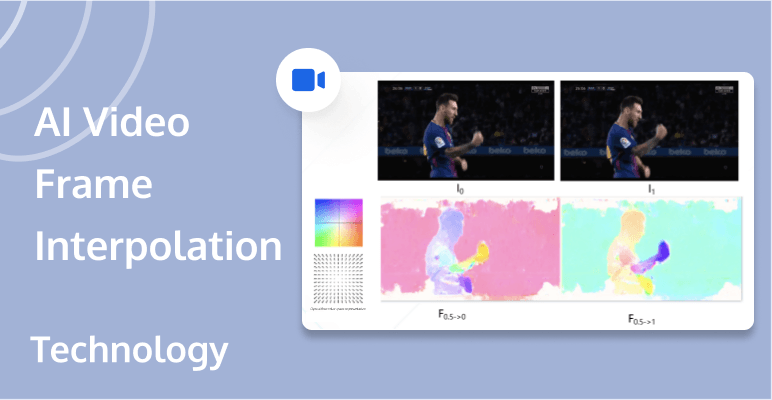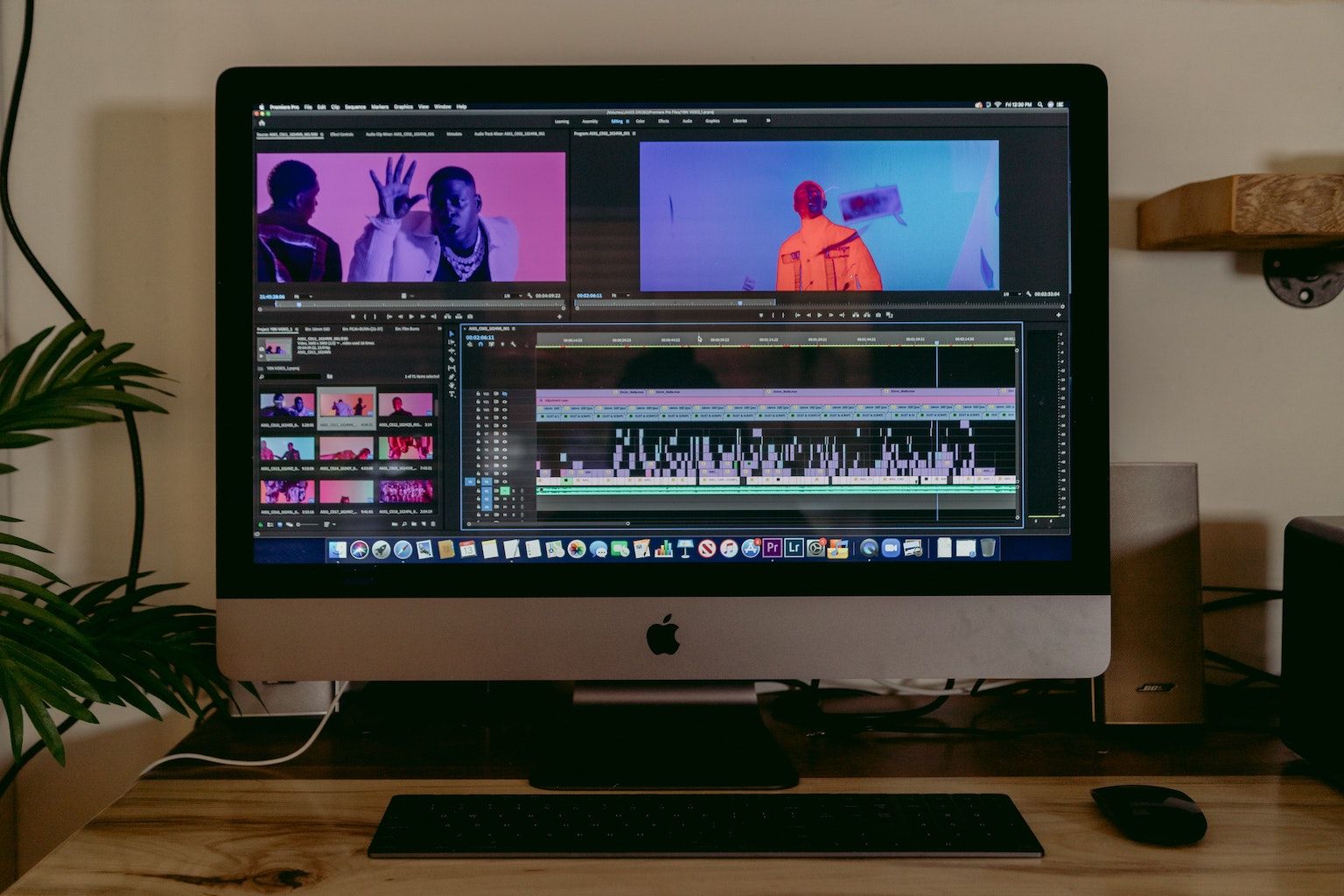
The video editing industry is undergoing rapid digital transformations. In this innovative landscape, AI video frame interpolation has taken center stage. This article explores the intricacies of AI Video Frame Interpolation by outlining its operations, highlighting key aspects of the Tencent AI technique, discussing real-world applications, and envisioning its future potential. Let's start this in-depth understanding of this groundbreaking technology now!
What is AI Video Frame Interpolation?
AI Video Frame Interpolation is an advanced computational technique used in the domain of video processing. Generally, videos are composed of a series of frames that create the perception of motion when displayed at a rapid rate. However, due to limitations in recording technology or post-production editing, a video can often appear jerky or choppy if there are not enough frames per second. AI Video Frame Interpolation addresses this issue by generating new intermediate frames to enhance video fluidity and quality.
This technique leverages advancements in Artificial Intelligence (AI) and machine learning where AI models are trained to predict how objects in a scene will move and how the pixels will shift from one frame to the next. It interpolates these new frames based on the existing frames, leading to smoother videos with higher frame rates. This technology is especially valuable in slow-motion video production, video gaming, virtual reality, and other applications where fluid motion contributes significantly to the user experience.

How AI Video Frame Interpolation Works
The algorithmic functioning of AI video frame interpolation lies on two fundamental processes, namely motion estimation and motion compensation. During motion estimation, the AI model identifies and analyzes the movement of different pixels between consecutive frames. It determines the overall motion of the scene as well as the motion trajectories of different objects.
Once motion estimation is completed, the AI uses motion compensation to generate new frames. Here, pixels are effectively shifted according to the results of motion estimation. Then, the AI algorithm predicts the appearance of extra frames that should exist between the original frames. Leveraging deep learning techniques, the AI interpolates pixel values based on adjoining frames and creates an "in-between" frame that heightens the continuity and flow without a noticeable increase in the video's speed.
Key Features of Tencent AI Video Frame Interpolation
- A Smart Transcoding: Smart Transcoder technology intelligently analyzes the input video to optimize algorithms that improve subjective quality and bitrate. It includes features such as SDR-to-HDR upconversion, AI frame rate upsampling, Super Resolution upsampling, detail enhancement, color enhancement, and more. These features enhance videos in various scenarios like museums, archives, and scenic parks, providing a richer visual experience.
- Video Frame Insertion: This application uses AI deep learning models and optical flow estimation to generate new frames between existing ones, creating clear and fluid motion that looks more lifelike and immerses the viewer. It is helpful in modern adaptation of low frame rate videos, broadcasting/streaming media platforms, and old films restoration.
- Super Resolution: It is a video resolution upscaling technique that improves the subjective image quality and video resolution while intelligently preserving important details. It is suitable for museums, archives, and Scenic/Park large screens.
- Smart Enhancement: Integrating multiple video and image processing modules, it enhances the video quality and details, providing a richer experience with less processing time. Applicable scenarios include museums, archives, scenic parks, and old photo or cover image repair.
- Night Scene Enhancement: It intelligently improves brightness and object details in night scenes, alleviating the need for expensive equipment during night shooting. Suitable scenarios include parks with night tours.
- Detail Enhancement (Sharpening): Enhancing images with richer details, edge enhancement, and visual clarity, it can be applied to almost all videos to improve subjective picture quality.
- Smart Deblocking (Compression Distortion Repair): AI models trained to recognize and repair compression artifacts such as macroblocking and ringing effects, improving visual quality especially for overly compressed or transcoded videos.
- Debounce: A video stabilization technique that removes shaky video caused by unstable filming scenarios. Applicable scenarios include outdoor sports filming.
- Video Denoising: Eliminating noise and improving visual quality, it is helpful in old movie restoration and shooting promotional videos in parks with night tours.
- Scratch and Snowflake Removal: Using AI machine learning to identify and repair visual quality problems like film scratches and snowflakes, ultimately lessening distractions for viewers. It is most applicable in broadcasting, museum, film studio, and video platform scenarios.
- Old Film Restoration: Automatically detects damages and enhances areas in old films, improving image quality and resolution to modern standards. Most suitable for museums with a massive collection of historical material.
- Horizontal Screen to Vertical: Automatically crops horizontal screen videos into vertical versions fit for mobile devices. Applicable scenarios include advertising, marketing, and official event announcements.
- Smart Clipping and Highlights: Analyzes full-length videos, identifies key events or actions, and creates collections of individual clips for faster retrieval, editing, or publishing. Automating the creation of exciting highlight videos and saving time.
- Smart Cover: Finds compelling frames for video or image thumbnails, attracting viewers and increasing clickthrough rates. Useful in forums, summits, expos, scenic parks, film and television promotion, and sports/games.
- Video Deduplication: Identifies duplicate or redundant video content, freeing up storage in archives or triggering content take-downs on sites due to copyright infringement.
- Green Screen Replacement: Provides natural and pleasing background replacements using proprietary algorithms.
- Watermark Detection: Recognizes watermarks, logos, and graphics in videos and detects associated creators to avoid copyright infringement or promote related content. Suitable for video review and recommendation scenarios.
- Video Tagging: Uses AI deep learning to automate content scanning and tag generation for short-UGC videos, aiding video classification, and text labeling processes.
Applications of Tencent AI Video Frame Interpolation
1. Upgrading Legacy Content
Legacy content, including old movies and TV shows, can be significantly enhanced using AI video frame interpolation. Low frame rates that often characterize such content can be boosted to meet modern standards, making the content more attractive to today's viewers.
2. Video Editing And Post-Production
AI video frame interpolation serves as a valuable tool for video editors. By filling in extra frames, it smoothes the transitions between different video clips, resulting in a more seamless and natural appearance in edited videos.
3. Enhanced Video Playback
Tencent's AI video frame interpolation can be used to enhance video playback in scenarios where smooth motion and reduced motion artifacts are essential. This technology ensures high-quality display for sports broadcasts, action films, and video games. By interpolating new frames into the video stream, it provides a more fluid and enjoyable viewing experience.
4. Medical Imaging
The technology also has applications in the medical field, where it can enhance the quality of medical imaging. Improving the clarity and fluidity of video-based medical diagnostic tools can provide more precise images, aiding in accurate diagnoses and better surgical planning.
5. Slow-Motion Video Creation
This technology can be utilized to create high-quality slow-motion videos from ordinary footage. This is particularly helpful for content creators in sports analysis, filmmaking, and scientific research, where analyzing sequences in detail is essential. The AI interpolates additional frames, slowing down the action without losing clarity or quality.
6. Virtual Reality (VR) And Augmented Reality (AR)
In the realm of VR and AR where high frame rates are needed to deliver a realistic user experience, AI video frame interpolation comes in handy. It helps maintain high frame rates, which contributes to more immersive environments, mitigating issues like motion sickness that low frame rates can cause.
The future of AI video frame interpolation
- Improved Algorithms and Real-time Processing: As AI technology continues to evolve, researchers are focused on refining the underlying interpolation algorithms to deliver more accurate and real-time results. The focus here would be to improve the quality control mechanisms as current interpolation frame quality can vary based on the model and video complexity.
- Increased Accessibility: Currently, the computational resources required for training and running AI models for video frame interpolation are huge, which limits accessibility. Future efforts are inclined towards making this technology more user-friendly and widely accessible.
- Minimizing Artifacts: One of the issues with current AI video frame interpolation techniques is that they can sometimes introduce new artifacts or distortions into the video. In the future, we can expect to see technical advancements aimed at minimizing such visual distortions.
Looking for a powerful solution to enable real-time audio and video communication? Consider leveraging Tencent RTC. Developed by Tencent, this cloud-based service supports cross-platform solutions for audio and video calls, live streaming, and handles a large number of concurrent users. Noteworthy is its low latency, crucial for applications such as online gaming, remote collaboration, and live streaming where real-time interaction is vital. Furthermore, it follows strict security and privacy protocols, providing end-to-end encryption to protect user data. From education to healthcare, Tencent RTC can revolutionize your communication and collaboration experiences.
Conclusion
Undoubtedly, AI video frame interpolation holds an essential place within the array of innovative technologies today. It not only fills gaps between frames for better video playback but also shapes the future of digital imagery and content consumption. With an entity as potent as Tencent setting its sails forth this new horizon, we can expect a revolution that will redefine our perception of video aesthetics on an unprecedented scale. Regardless of the domain, whether it's gaming, streaming, or broadcasting, AI video frame interpolation promises a smoother, more immersive visual experience, taking us to a future where motion coherence and image quality coexist flawlessly.
If you have any questions or need assistance, our support team is always ready to help. Please feel free to Contact Us or join us in Telegram.
FAQ
Here are some commonly asked questions about AI video frame interpolation.
Why do we interpolate frames?
We interpolate frames to enhance video playback by generating intermediate frames between existing ones, resulting in smoother motion and higher frame rates. This technique helps reduce the visibility of judder, motion blur, and stuttering, thereby improving overall viewing experience, particularly for fast-paced or slow-motion content.
What is a motion range in Frame Interpolation?
Motion range, in frame interpolation, refers to the extent of object movements that the interpolation algorithm can accurately analyze, detect, and reproduce. An efficient frame interpolation method should handle a wide range of motion, capturing both small, subtle, and large, rapid motions to ensure seamless synthesis of interpolated frames and a natural on-screen presentation.
What are the different types of frame interpolation?
There are two primary types of frame interpolation: motion interpolation and morphological interpolation. Motion interpolation typically involves creating artificial frames in between the existing ones by using motion vectors to predict a frame's progress. Morphological interpolation, on the other hand, focuses on shape changes between frames and attempts to create an ideal ‘in-between’ shape. It is important to note that the interpolation algorithm used significantly affects the specific techniques and methods.


